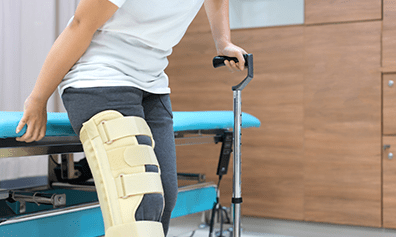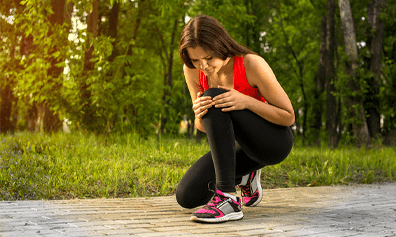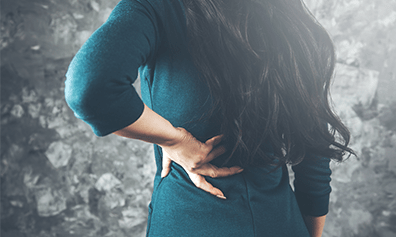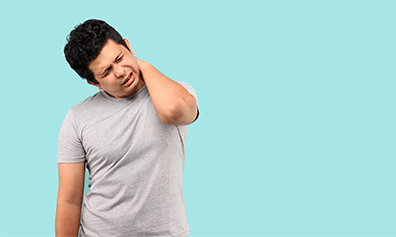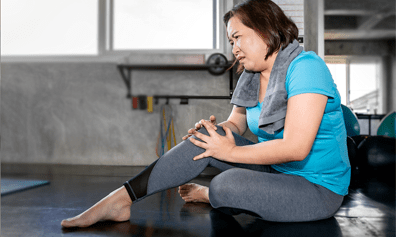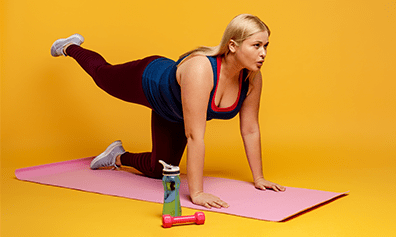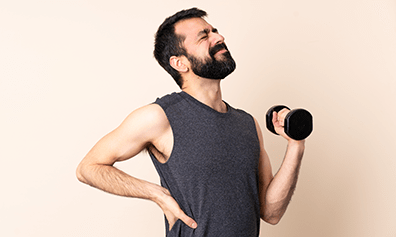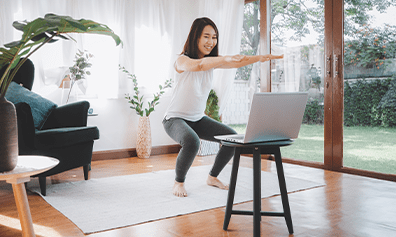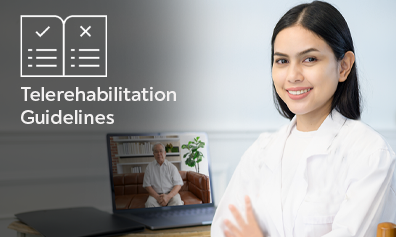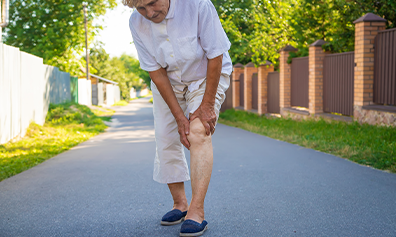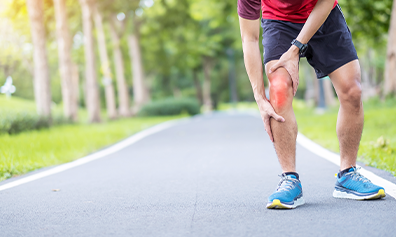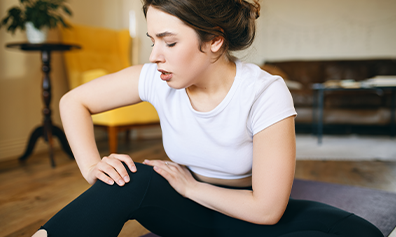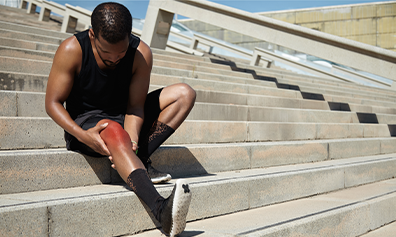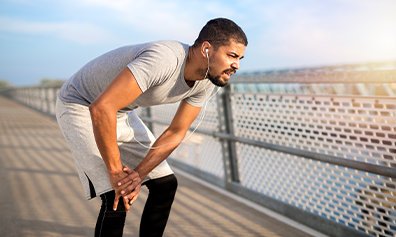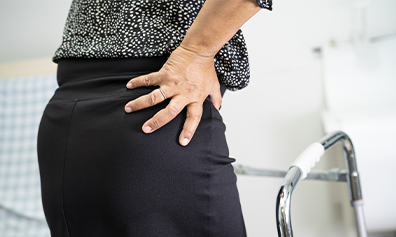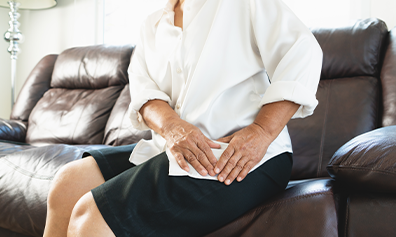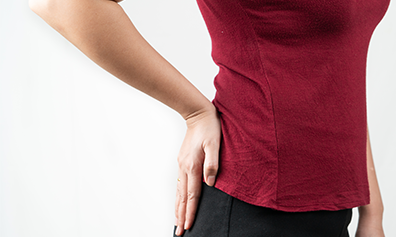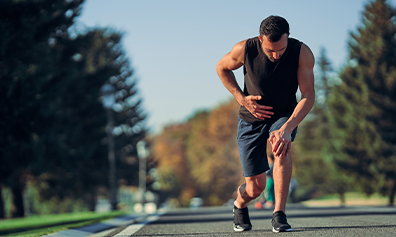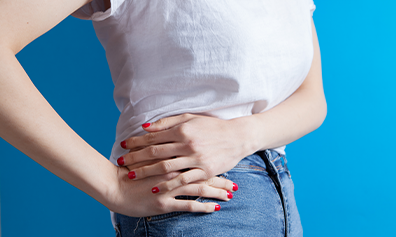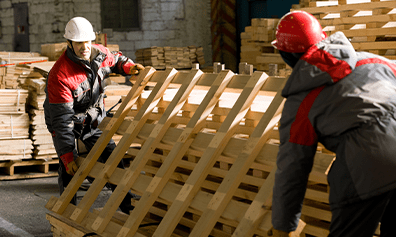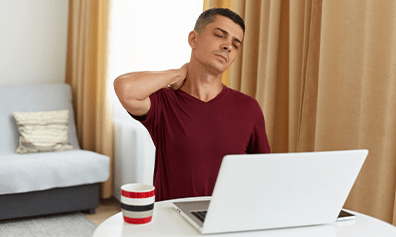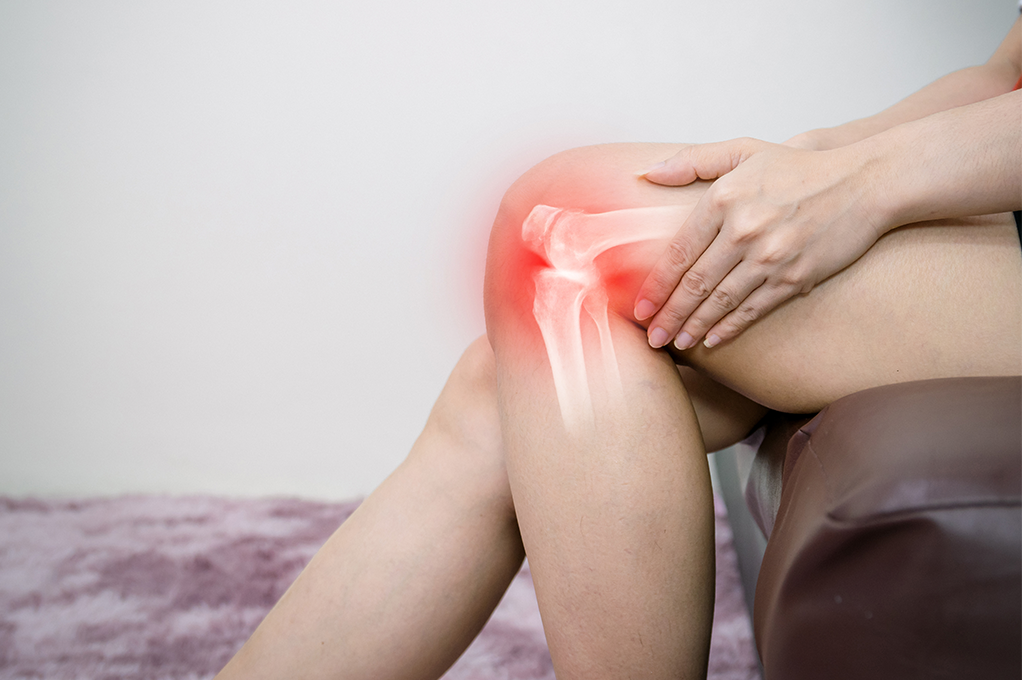
What is knee stiffness?
A stiff knee is a common complaint, especially among older adults and those who are very physically active.
Knee stiffness can occur due to poor flexibility or muscular imbalances in the legs. Injury and arthritis are other common causes of knee stiffness
What are the causes of knee stiffness?
The following are some common causes of a stiff knee:
1. Injury to menisci
The menisci are two "C" shaped pieces of cartilage that sit inside the knee joint. Their role is to act as a cushion, or shock absorber, between the bones that make up the joint.
A person can injure or damage a meniscus by suddenly moving or twisting the knee. This is most likely to occur during sports or other types of physical activity.
The menisci are also prone to degeneration with age. Specifically, as the menisci degrade, they become more prone to tearing. A person will likely hear or feel a "pop" when a meniscus rips. According to the American Academy of Orthopaedic Surgeons, the knee will then start to feel stiff
In many cases, people can still walk on the knee, though they may also experience symptoms such as :
- • Pain
- • Swelling
- • loss of full range of motion
- • locking knee
- • a feeling that the knee is giving out
2.Injury to ligaments
Ligaments are bands of fiber that connect bone to bone. Ligaments that run through the knee connect the thigh bone, or femur, to the lower leg bone, or tibia
A person may sprain, tear, or rupture their knee ligaments. If this occurs, a person may experience:
- • pain in the knee joint
- • instability of the knee
- • swelling in the knee
3.Arthrofibrosis
Arthrofibrosis, or stiff knee syndrome, occurs when excessive scar tissue forms around the knee joint. It is not uncommon for people to experience arthrofibrosis following knee surgeries such as knee replacement or anterior cruciate ligament surgery
Some additional symptoms of arthrofibrosis include:
- • knee pain that keeps worsening
- • swelling and warmth around the knee
- • walking with a bent knee
4.Arthritis
three common types of arthritis can contribute to knee pain and stiffness.
A.Rheumatoid arthritis
heumatoid arthritis results from an autoimmune condition that causes the body to attack its tissues. Rheumatoid arthritis typically affects both knees. People with rheumatoid arthritis sometimes experience swelling of the synovial membrane, a thin membrane that covers the inner lining of the knee joint. Swelling of the synovial membrane causes knee stiffness and pain.
B. Osteoarthritis
steoarthritis occurs due to wear and tear of the cartilage between bones. As the cartilage within the knee degrades, it causes the bones within the knee to rub against each other. The rubbing bones can cause bony growths called spurs. These can cause joint stiffness and pain.
C.Post-traumatic arthritis
Injuries such as meniscal and ligament tears can increase the likelihood of further injury to the knee joint. Over time, this can lead to post-traumatic arthritis (PTA). PTA occurs years after a person sustains an injury to their knee.
People with PTA may experience the following symptoms:
- • swelling in the knee joint, which may make it difficult to move the knee
- • knee pain
- • worsening of symptoms following physical activity
- • worsening of symptoms during wet weather
- • a feeling of weakness in the knee
How do I manage my stiff knee?
The treatment options for a stiff knee depend partly on the cause. If the reason is a minor injury, the following home treatments may be enough to alleviate pain and stiffness until the wound heals:
- • resting the knee
- • applying an ice pack to the knee at regular intervals
- • taking over-the-counter nonsteroidal anti-inflammatory drugs
- • wearing a knee brace to stabilize the knee and help prevent further injury
For more severe injuries and knee stiffness that is severe or persistent, a person may need to see their doctor. The doctor will work to diagnose the cause of knee stiffness and will recommend appropriate treatments.
Depending on the cause of the knee stiffness, these treatments may include:
- • taking prescription pain medications
- • using corticosteroids
- • taking rheumatoid arthritis medications, such as disease-modifying anti-rheumatic drugs and biologics surgery
- • physical therapy, to improve knee function and overall mobility
Exercises and stretches that may help
In some cases, people with a stiff knee should avoid exercising. Some knee injuries need time to heal and would benefit from rest instead of exercise. However, a stiff knee that occurs due to a form of arthritis may benefit from training. The Arthritis Foundation state that different exercises and stretches could help in various ways:
- • Strengthening exercises: Increasing muscle strength around the knee reduces the stress on the joint. Examples of these exercises include leg lifts and hamstring curls
- • Range-of-motion exercises: Stretches and exercises that increase the knee's range of motion keep the joint moving to reduce stiffness. Examples of these exercises include heel slides and stretching with a yoga strap.
- • Aerobic exercises: Cardio exercises can boost a person's energy levels and reduce any excess weight that may put extra pressure on the knee. Examples of these exercises include cycling and swimming.
- • Balance exercises: These exercises strengthen the muscles around the knee while also reducing the risk of falling, which could damage the joint further. Examples of these exercises include single-leg standing and standing on a foam pad.
Benefits of knee strengthening exercises
The Arthritis Foundation states that exercise may be the most effective way to treat osteoarthritis without surgery. In addition, the American Academy of Orthopaedic Surgeons notes that solid and flexible muscles can keep knees healthy and prevent injury.
Knee strengthening exercises do not directly affect the knee joint, but they strengthen its muscles. Strong muscles in the legs can help provide support for the knees. This support may alleviate pressure and strain on these joints, which can relieve pain and help a person be more active.
It is best to warm up with light exercise before starting knee strengthening exercises. Examples of gentle exercise include walking, cycling, and using an elliptical machine, which put minimal stress on the knees. This activity will help increase blood flow to the muscles and allow them to be more flexible.
The following exercises can help strengthen the muscles surrounding the knee. If a person experiences pain during these exercises, they should stop doing them and speak to a doctor. Anyone with severe knee pain should consult a doctor before trying to exercise
1.Leg lifts
- 1. Lie down on the floor with the back flat. Use a yoga mat, folded blanket, or exercise mat for comfort on a hard floor
- 2. Keep the left leg straight and bend the right leg slightly at the knee, bringing the foot closer to the body.
- 3. Pull the abdominal muscles inward by imagining the belly button pulling down toward the floor. Doing this should bring the lower back down against the floor and help provide extra support during the exercise. Place a hand beneath the lower back to ensure no space between the small of the back and the floor. If there is space for the hand, gently push the lower back down on top of the hand.
- 4. Slowly lift the left leg without bending the knee. Keep the toes pointed toward the ceiling and stop when the leg is about 12 inches off the floor. It should not be higher than the bent knee on the right leg.
- 5. Hold the left leg up for 5 seconds.
- 6. Slowly lower the leg back down to the floor. Please do not put it down too quickly or let it drop
- 7. Repeat two more times with the same leg.
- 8. Switch sides and repeat.
What not to do
- • Do not let the back arch during the exercise.
- • Do not jerk or bounce the leg or lift it above the knee on the bent leg.
- • People who have osteoporosis or a back compression fracture should not perform this exercise.
2. Standing hamstring curls
- 1. Stand with your feet hip-width apart. Place your hands on your waist or on a chair for balance. Shift your weight onto your left leg.
- 2. Slowly bend your right knee, bringing your heel toward your butt. Keep your thighs parallel.
- 3. Slowly lower your foot.
- 4. Complete 12 to 15 reps.
- 5. Repeat with the other leg.
A person with a form of arthritis may want to discuss any new exercise plans or programs with their doctor before starting.
The following tips can also help prevent or alleviate knee stiffness and pain:
- • avoiding stretching until sufficiently warmed up
- • stretching the legs before and after exercise
- • stretching slowly and not to the point of the pain
- • using proper form when exercising
- • making sure that the leg muscles are balanced in strength
- • avoiding exercises that make the symptoms worse
Summary
Knee stiffness is a common issue. It is widespread in people who are very physically active, as well as older adults. Knee injuries and arthritis are among the most common causes of knee stiffness. Rest, ice, and OTC medications can help alleviate knee stiffness and associated symptoms in many cases.
However, a person should talk to their doctor if they have sustained a knee injury or if additional symptoms accompany their knee stiffness. People who suspect that they have arthritis in the knee should also see a doctor for a diagnosis and appropriate treatment. Physical therapy plays a huge role in helping you find relief from knee stiffness, and with online medicines, you can do this from the comfort of your home
Telehealth to Your Rescue
During these times of global pandemic, it can be challenging to find the help you need to maintain your joint health. But with telerehabilitation services, you can get the benefits of physical therapy from the comfort of your home without worrying about exposure or transport.
TheraNow, one of the best telerehabilitation services with excellent expertise in the field of online physical therapy, with our team of virtual physical therapists who are waiting to provide you the care you need to get your life back in its happy place. You can book your appointment by visiting us at Theranow: Online Physical Therapy Services .

